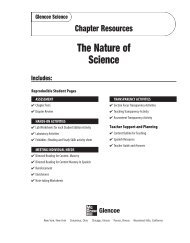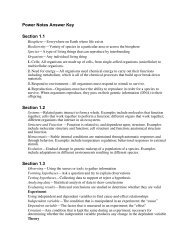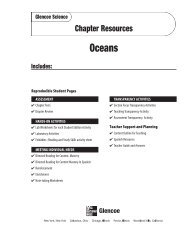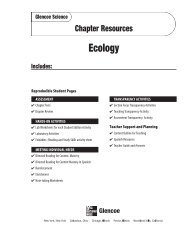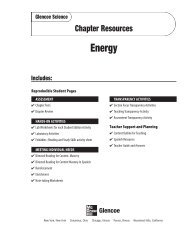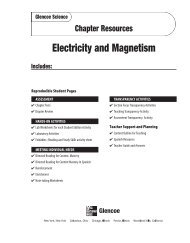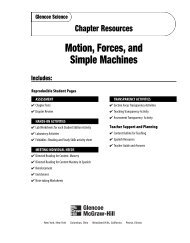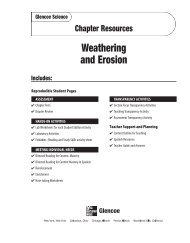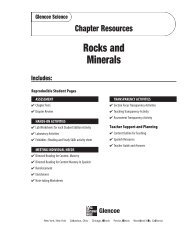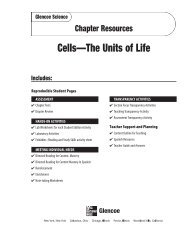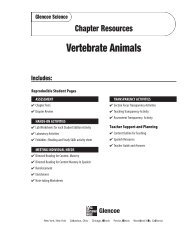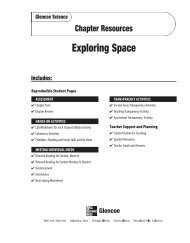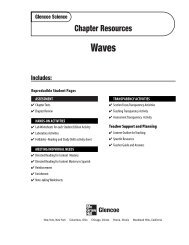Content Outline for Teaching - Potosi School District - Home
Content Outline for Teaching - Potosi School District - Home
Content Outline for Teaching - Potosi School District - Home
Create successful ePaper yourself
Turn your PDF publications into a flip-book with our unique Google optimized e-Paper software.
21<br />
Section 2<br />
<strong>Content</strong> <strong>Outline</strong><br />
<strong>for</strong> <strong>Teaching</strong><br />
Ecology<br />
Relationships Among Living Things<br />
Underlined words and<br />
phrases are to be filled<br />
in by students on the<br />
Note-taking Worksheet.<br />
A. Ecologists organize living things into groups to make it easier to study ecosystems.<br />
1. A population is a group of the same type of organisms living in the same place at the<br />
same time.<br />
2. All of the populations that live in an area make up a community.<br />
3. Ecologists want to know the size of a population, where its members live, and how it<br />
is able to stay alive.<br />
4. Ecologists determine population density by comparing the size of a population with<br />
its area.<br />
5. Ecologists use tags to study populations of animals that travel long distances.<br />
B. Populations do not have enough resources to grow larger and larger <strong>for</strong>ever.<br />
1. Things that limit the size of a population are called limiting factors.<br />
2. Limiting factors include food, water, living space, and other resources.<br />
C. The most common interactions in a community are feeding interactions.<br />
1. Organisms will compete <strong>for</strong> any resource that is in limited supply.<br />
a. The greater the population size of an area, the greater the competition <strong>for</strong> resources.<br />
2. Predation is the act of one organism feeding on another.<br />
a. A bird of prey, such as a falcon, is an example of a predator.<br />
b. A facon’s prey is the organism it eats.<br />
3. When the African tickbird eats insects off a zebra’s skin, both organisms in the relationship<br />
benefit.<br />
4. A bird that builds its nest in a tree benefits but the tree is neither harmed nor helped.<br />
5. Insects biting a zebra’s skin harm the zebra but benefit themselves.<br />
D. Each type of organism has a different role to play in an ecosystem.<br />
1. The role of an organism in an ecosystem is called its niche.<br />
2. The place where an organism lives out its life is called its habitat.<br />
Discussion Question<br />
What factors might prevent a population of dandelions from overtaking a lawn? Answers<br />
will vary. Student responses should include competition <strong>for</strong> soil nutrients, availability of<br />
water, competition from other plant populations <strong>for</strong> space.<br />
Ecology 70




